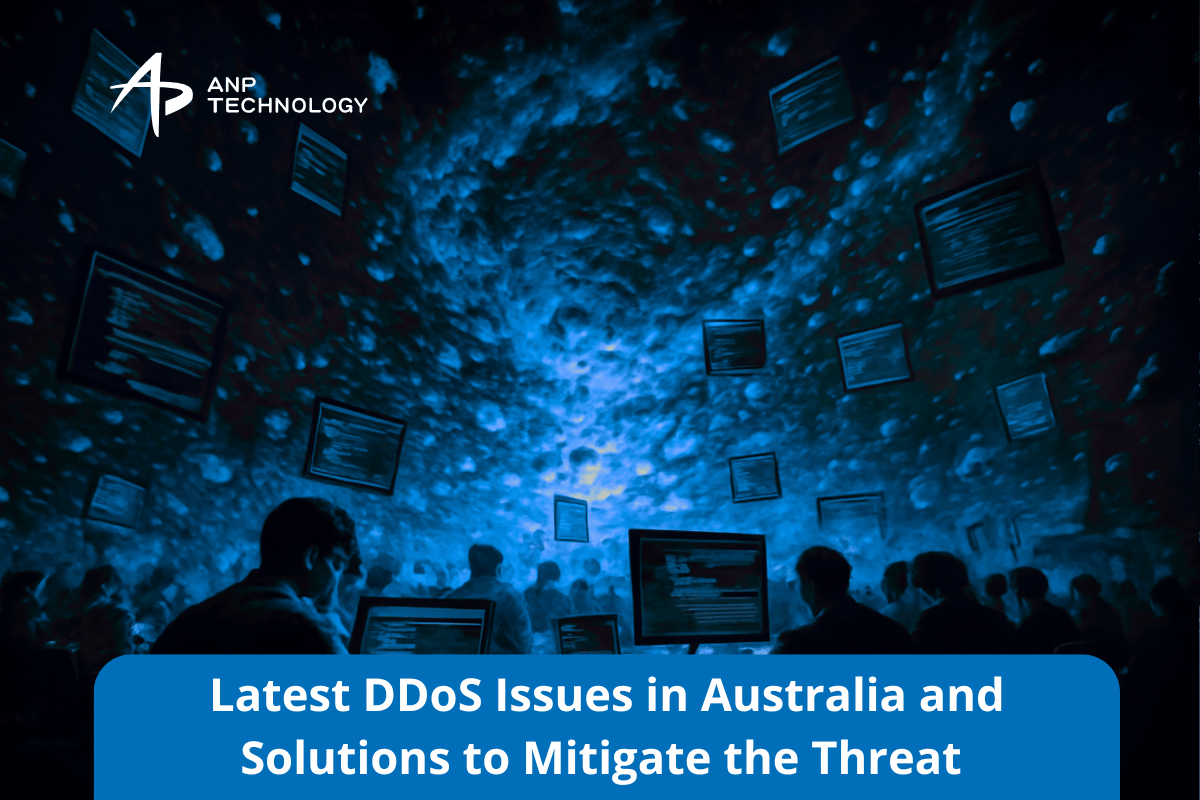
Distributed Denial of Service (DDoS) attacks have become one of the most significant cybersecurity threats worldwide, and Australia is no exception. These attacks overwhelm a target’s network with excessive traffic, often resulting in system crashes, service disruptions, and substantial financial losses. As businesses and government services become increasingly reliant on digital infrastructure, the risk and frequency of such attacks continue to rise.
This article explores the current DDoS landscape in Australia, highlights the key issues, and presents effective solutions to mitigate these attacks.
1. Understanding DDoS Attacks
A Distributed Denial of Service (DDoS) attack occurs when multiple compromised devices, often part of a botnet, flood a target server, service, or network with a massive amount of traffic. This overload of requests exhausts the target system’s resources, rendering it unable to process legitimate user traffic, and ultimately causes the system to crash or become unresponsive.
Types of DDoS Attacks:
- Volumetric Attacks: These attacks involve overwhelming the target network’s bandwidth with high volumes of traffic, potentially flooding the system and causing it to go offline.
- Protocol Attacks: These exploit weaknesses in network protocols to exhaust resources on firewalls, load balancers, and other security devices.
- Application Layer Attacks: These attacks target specific applications with seemingly legitimate requests, consuming server resources and leading to service degradation or downtime.
The Growing Threat in Australia
In Australia, DDoS attacks have been rising significantly in recent years, with various sectors such as finance, government, telecommunications, and retail being frequent targets. The Australian Cyber Security Centre (ACSC) reported a 12% increase in cyber threats, including DDoS, during FY2023-2024 . Meanwhile, AARNet, the Australian Research and Education Network, noted a 300% increase in DDoS incidents in early 2023 compared to the same period in 2022 .
This surge highlights the growing vulnerability of businesses and critical infrastructure to such attacks.
2. Key Issues with DDoS Attacks in Australia
The consequences of a successful DDoS attack are severe. Not only can businesses face significant financial losses from service disruptions, but they can also suffer reputational damage and customer dissatisfaction. Small and medium-sized enterprises (SMEs) are particularly at risk, as they often lack the resources to implement sophisticated DDoS protection strategies. As reported by NETSCOUT’s Asia-Pacific Cyber Threat Intelligence Report, Australia is among the top 10 countries targeted by DDoS attacks, with businesses increasingly encountering these threats.
Targeted Sectors in Australia
- Financial Institutions: Banks and financial services are prime targets due to the critical and sensitive nature of the services they provide. In early 2023, major Australian banks experienced disruptions as a result of large-scale DDoS attacks, preventing customers from accessing online banking services.
- Government Services: Critical government websites, including the Australian Taxation Office (ATO) and MyGov, were attacked, leading to delays in public services such as tax return processing and welfare payments.
- E-commerce and Retail: Retailers operating online platforms have seen significant losses during critical sales periods such as Black Friday, as DDoS attacks cause websites to crash and prevent transactions from being completed.
3. Case Studies of Recent DDoS Attacks in Australia
- The Australian Banking Sector: In early 2023, a prominent Australian bank suffered a DDoS attack that disabled its online banking services for over 12 hours, making it impossible for customers to access their accounts or make transactions. The attack was attributed to a botnet composed of thousands of compromised IoT devices.
- Government Disruptions: A series of DDoS attacks targeted Australian government websites in 2022, including the ATO and MyGov portals. These disruptions delayed critical public services, causing frustration among citizens and threatening public trust.
- E-commerce Challenges: During the 2022 holiday season, an Australian e-commerce platform experienced a DDoS attack that led to the website crashing during peak shopping hours. The attack resulted in significant financial losses and affected thousands of customers trying to complete their purchases.
Read more: Experience Industry-Leading Cybersecurity with SentinelOne – Free Trial 30 Days
4. Solutions to Mitigate DDoS Attacks
As DDoS attacks continue to evolve in sophistication, businesses and organizations must adopt a multi-layered approach to mitigate the risks. Below are several strategies to reduce the impact of such attacks:
1. Enhanced Network Security
- Firewalls and Intrusion Prevention Systems (IPS): Implementing next-generation firewalls and IPS solutions can help detect and block malicious traffic before it reaches the network.
- Rate-Limiting: By configuring rate-limiting tools, businesses can manage the volume of incoming traffic, ensuring that only legitimate requests pass through.
2. Cloud-Based DDoS Protection
Services like Cloudflare, Akamai, and AWS Shield offer scalable, cloud-based DDoS protection that helps businesses absorb large amounts of malicious traffic. These services redirect traffic through their global networks, filtering out harmful traffic before it reaches the target system. This approach is particularly effective against volumetric attacks.
3. Anti-DDoS Hardware Appliances
Hardware appliances, such as Arbor Networks and Radware, provide specialized protection against DDoS attacks. These devices can be placed between the organization’s network and the internet to filter malicious traffic in real-time.
4. Redundancy and Load Balancing
Establishing multiple data centers across different geographic locations can help ensure that if one location is under attack, the system remains operational by relying on other data centers. Load balancing also helps distribute incoming traffic to prevent overloading on a single server.
5. Incident Response Plan
A well-structured incident response plan is crucial for quickly mitigating the effects of a DDoS attack. The plan should include:
- Rapid identification of the attack.
- Immediate activation of mitigation measures such as cloud-based protection.
- Coordination with ISPs and third-party vendors.
- Clear communication with stakeholders and customers.
5. Best Practices for Preventing DDoS Attacks
Regular Software Updates: Ensuring all software and hardware devices are kept up-to-date with the latest security patches is essential to closing vulnerabilities that may be exploited in an attack.
Proactive Network Monitoring: Implementing network monitoring tools that can detect unusual traffic patterns in real-time is essential for early detection of DDoS attempts.
Employee Training: Staff should be educated on the potential risks and signs of DDoS attacks, as well as the steps to take in case of an attack.
Conclusion
DDoS attacks are a growing concern in Australia, particularly for businesses in critical sectors such as banking, government, and e-commerce. These attacks not only cause service disruptions but can also lead to financial losses and reputational damage.
However, by implementing a robust security infrastructure that includes cloud-based protection, anti-DDoS appliances, and redundancy, organizations can reduce the risk of such attacks. Collaboration with ISPs and having a comprehensive incident response plan will ensure that businesses can act swiftly when an attack occurs.
To ensure your business stays protected from the growing threat of DDoS attacks, partner with ANP Technology for advanced, cutting-edge DDoS mitigation solutions.

With ANP Technology’s robust services, you can prevent downtime by redirecting malicious traffic, secure sensitive data with real-time filtering, and scale effortlessly with cloud-based protection to handle traffic surges.
Our team of experts will provide customized solutions tailored to your industry, whether you’re in finance, government, or e-commerce.



